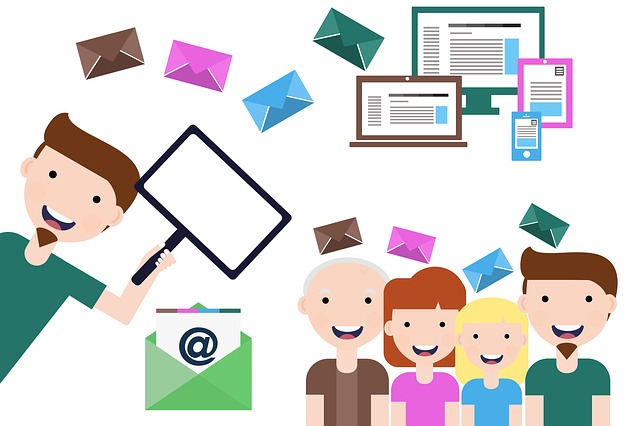Today, we will show you how to secure your devices against phishing emails. That way, you can use your webmail without worries.
There is currently a noticeable increase in the number of phishing attacks. It is a generalized problem representing a significant risk for people and organizations. Phishing is an issue that we must all consider, as these types of attacks will not disappear soon.
Cybercriminals have typically implemented phishing attacks after data breaches. There are cases where criminals send messages to users warning them to change their passwords but send them to a fake website in an attempt to collect their data.
Table of Contents
How To Detect Phishing Emails
Phishing emails are a cunning attempt by scammers to trick you into revealing personal information or clicking on malicious links.
READ ALSO: Email Security Guide: Safeguarding Your Digital Communication
Here’s how to be vigilant and stay safe:
1. Beware the Urgent Tone and Unfamiliar Sender
Phishing emails often sound desperate or use scare tactics. They might have an unusual sender address pretending to be a bank, credit card company, online store, or even a government agency you wouldn’t normally expect to contact via email.
2. Verify the Sender and Contact Information
- Do you have an account with the claimed sender? Double-check if you’re a customer of the company the email claims to be from.
- Is the email address legitimate? Phishing emails often have sender addresses that look almost like the real company’s address but have misspellings or extra characters. Look closely!
- Don’t trust the contact details in the email. If you’re unsure, find the company’s official website and use the contact information listed there to reach out and confirm the email’s legitimacy.
3. Resist Clicking on Links or Downloading Attachments
- Hover, Don’t Click: Many email clients allow you to hover over a link to see the URL it directs you to. Be wary if it doesn’t match the text displayed in the email.
- Phony Websites Look Real: Phishing emails might link to websites that mimic real companies’ login pages. Always double-check the URL before entering any personal information.
- Attachments Can Be Malware: Never open attachments from suspicious emails, especially those with file extensions like “.exe” or “.bat,” which can contain malware.
4. Look for Security Cues
- “HTTPS” Matters: Legitimate companies transmitting sensitive data will use a secure connection, indicated by “HTTPS” at the beginning of the URL. Look for this before entering any passwords or financial information.
- Grammatical and Spelling Errors: Phishing emails often contain typos, grammatical mistakes, or awkward phrasing. A legitimate company is unlikely to make such errors in official communication.
5. When in Doubt, Verify Directly
Suppose you’re unsure about an email’s legitimacy. In that case, don’t hesitate to contact the company directly using a phone number or email address you know is correct (from an official website, not the email itself).
Following these tips and staying cautious can significantly reduce the risk of falling victim to phishing scams and protect your sensitive information.
READ ALSO: Most Effective Cybersecurity Strategy For A Small Business [We Asked 45+ Experts]
How Do Phishing Emails Work?
Phishing emails are a cunning attempt by hackers to steal your personal information, login credentials, or financial details.
These deceptive emails can appear alarmingly legitimate, often impersonating trusted institutions you interact with daily.
Here’s a breakdown of how they work:
The Bait
- Urgency and Fear: Phishing emails often create a sense of urgency or fear to pressure you into acting quickly without thinking critically.
- Spoofed Sender: Hackers cleverly disguise the sender’s address to appear like a legitimate source. They might use logos and branding from well-known banks, credit card companies, online retailers, or government agencies.
- Personalized Touch: Some phishing attempts might include bits of personal information they gleaned from data breaches or social media to appear more believable.
The Hook
- Phony Invoices: The email might contain a fake invoice with a downloadable attachment (often a PDF or DOC file). This attachment could be malicious software (malware) disguised as a bill that infects your device when opened.
- Suspicious Links: The email might pressure you to “click here” to update your account information, verify your identity, or make a payment. Clicking such links can lead to fraudulent websites designed to steal your login credentials or personal details when you enter them.
The Steal
- Fake Login Pages: Clicking a phishing link might take you to a website that looks almost identical to the real website of the impersonated company. The hacker steals your credentials once you enter your username, password, or other sensitive information on this fake page.
- Malware Downloads: Downloaded attachments can be malware that installs itself on your device. This malware can then steal your data, track your activity, or even lock you out of your device and demand a ransom to unlock it.
READ ALSO: Security Alert: The Most Common COVID-19 Online Frauds and Scams
How To Secure Devices Against Phishing Emails
Be cautious when it comes to phishing attacks
You can significantly reduce your chances of being a victim of phishing attacks by being prudent and smart when surfing online and checking your emails.
Don’t click on links that download files or open attachments in emails or social networks, even if they appear to come from a known and trusted source. If in doubt, open a new browser window and type the URL into the address bar.
Be very careful with emails that ask for confidential information, personal details, or banking information. Legitimate organizations, including financial institutions, will never request sensitive information by email.
Beware of shortened links.
Pay special attention to short links, especially on social networks. Cybercriminals often use these to trick you and send you to a fake site.
Cybercriminals can use these ‘fake’ sites to steal your data or carry out a download attack, infesting your device with malware.
READ ALSO: 7 Cybersecurity Trends to Follow in 2020
Carefully read emails that look suspicious.
Many phishing emails are pretty obvious. They contain a lot of typographical errors. Cybercriminals often make mistakes in these emails, sometimes even intentionally bypass spam filters, improve responses, and eliminate ‘smart’ recipients who will not fall into the trap.
Beware of Threats and Urgent Deadlines
Rarely will a reputable company need you to do something urgently. Generally, the threats and urgency that claim to be from a legitimate company are signs of phishing.
Some of these threats may include advising you to do something to prevent your account from being closed. For your safety, contacting the company through a known and trusted channel is best.
Surf safely with HTTPs
Use secure websites to navigate whenever possible, especially when sending confidential information online, such as credit card details.
It would be best to never use public Wi-Fi to bank, shop, or enter personal information online. If in doubt, use your mobile device connection; convenience should not precede security.
READ ALSO: 15 Tips to protect your privacy online
How To Secure Devices Against Phishing Emails: Frequently Asked Questions
What is the best way to protect against phishing attacks?
There’s no single “best” way, but a layered approach combining awareness and security measures is most effective:
- User Awareness: Being skeptical of unexpected emails, especially those creating a sense of urgency or fear, is crucial. Don’t click on suspicious links or attachments.
- Email Filtering: Most email providers offer spam filters that can catch some phishing attempts. However, these filters aren’t foolproof, so stay vigilant.
- Anti-Phishing Software: Consider anti-phishing software that can detect and block malicious emails or warn you before visiting known phishing websites.
- Strong Passwords & Two-Factor Authentication: Use unique, complex passwords for all your accounts and enable two-factor authentication whenever possible for an extra layer of security.
READ ALSO: Comprehensive Malware Guide: Safeguarding Your Digital World
What is the best way to protect against phishing attacks on mobile devices?
Phishing scams increasingly target mobile devices. Here are some additional tips:
- Download Apps Only from Official Stores: Avoid downloading apps from untrusted sources, as they might contain malware.
- Beware of Free Wi-Fi: Public Wi-Fi networks are not secure. Avoid accessing sensitive information like bank accounts or entering passwords on public Wi-Fi.
- Keep Mobile OS Updated: Ensure your mobile operating system has the latest security updates installed. These updates often patch vulnerabilities that hackers might exploit.
- Be Wary of SMS Phishing (Smishing): Similar to email phishing, scammers might send text messages urging you to click links or call suspicious numbers. Be cautious of such messages.
How are computers secured against phishing?
The strategies mentioned above apply to computers as well. Additionally, consider:
- Web Browser Security Settings: Enable features like pop-up blocking and website spoofing warnings in your web browser settings.
- Regular Security Scans: Regularly scan your computer with antivirus and anti-malware software to detect and remove potential threats.
What is the best defense against phishing emails?
A healthy dose of skepticism is your best defense. If an email seems too good to be true, it probably is. Always double-check before clicking or opening anything suspicious. When in doubt, directly contact the supposed sender through a verified channel (phone number from the official website, not the email itself) to confirm the email’s legitimacy.
What To Do Next When You Are A Victim Of A Phishing Email Attack?
If you mistakenly revealed your credit card number and PIN or opened an email attachment, you need to react quickly and take appropriate action:
- Contact your financial institution, check your account transactions, and block your account directly.
- Document the incident in as much detail as possible and file a criminal complaint.
- Also, set a new password for your email account. In this way, you can stop possible misuse of your mailbox.
- Use an antivirus program to scan your computer for possible “infestation.” Recommended antivirus programs include Kaspersky Antivirus, F-Secure Total, and Avira Antivirus.
- It would be best to inform the real provider about fake emails or websites.
- Consult an anti-cyber-fraud service company such as SpyCloud to hunt down the perpetrators.
Prevention is known to be the best medicine. Also, in your computer environment, Use a firewall antivirus an software, update your browser and operating systems, and perform regular security updates. You can check out our Deals page for the best protection tools.
Applying the abovementioned tips, you should be able to secure your devices against phishing emails.
I hope you find this post helpful.
RELATED POSTS
- Exclusive Tips to Stop Cyberbullying [For Teens and Parents]
- How to Detect Email Phishing Attempts
- Exclusive Interview with SpyCloud’s CEO and Co-Founder Ted Ross
- What is the Next Line of Action after being Scammed Online?
- 4 of the Most Secure Email Service Providers
- What Are Phishing Scams And How You Can Avoid Them?
- How To Stay Safe Online During Black Friday LIKE A PRO!
About the Author:
Mikkelsen Holm is an M.Sc. Cybersecurity graduate with over six years of experience in writing cybersecurity news, reviews, and tutorials. He is passionate about helping individuals and organizations protect their digital assets, and is a regular contributor to various cybersecurity publications. He is an advocate for the adoption of best practices in the field of cybersecurity and has a deep understanding of the industry.
Meet Angela Daniel, an esteemed cybersecurity expert and the Associate Editor at SecureBlitz. With a profound understanding of the digital security landscape, Angela is dedicated to sharing her wealth of knowledge with readers. Her insightful articles delve into the intricacies of cybersecurity, offering a beacon of understanding in the ever-evolving realm of online safety.
Angela's expertise is grounded in a passion for staying at the forefront of emerging threats and protective measures. Her commitment to empowering individuals and organizations with the tools and insights to safeguard their digital presence is unwavering.







